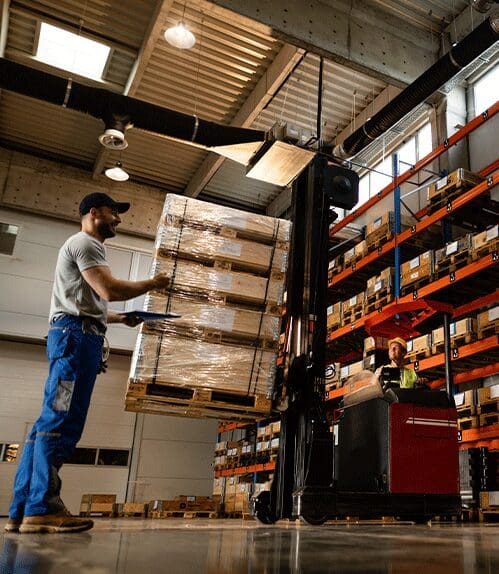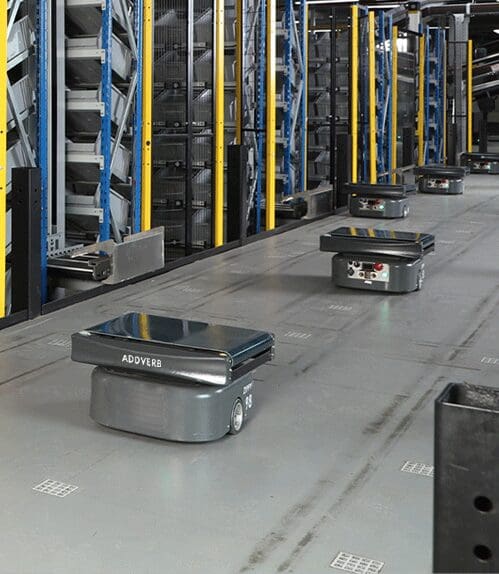Table of Contents
The e-commerce surge, particularly, has fueled the adoption of autonomous mobile robots (AMRs) in warehouses for inventory and order fulfillment. Key trend include robotics-as-a-service (RaaS) models, allowing businesses to implement robotics without large upfront costs. Markets and Markets, 2023
Over the past few years, mobile robots have started emerging as one of the most important assets in industries for material handling and other intra-logistics operations. These robots have minimized the need for manual handling and an increased number of handling tasks. Little do people realize that even though these robots carry heavy loads, they still face functional challenges.
This blog explores the challenges of mobile robots, examining the technical, operational, and environmental hurdles that mobile robots must overcome to become integral parts of our daily lives.
Mobile Robots
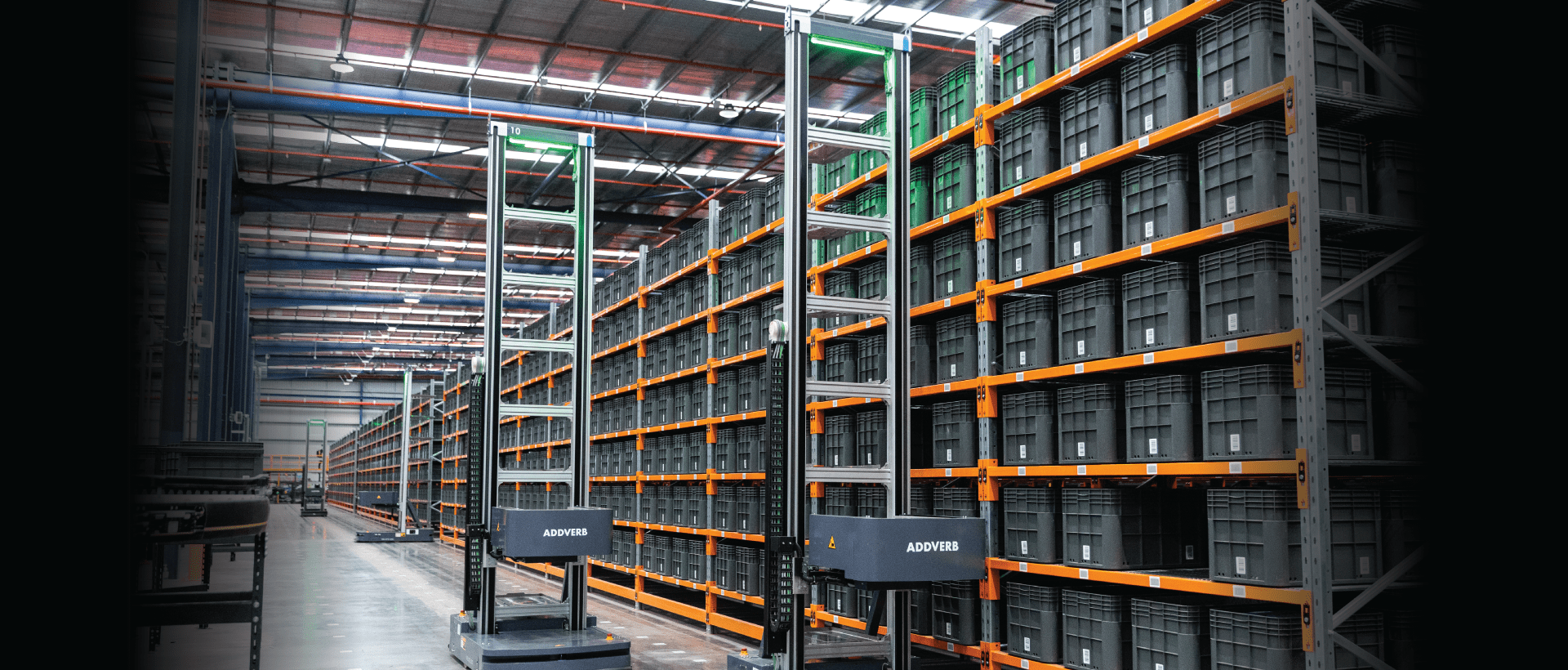
A mobile robot is a machine controlled by software that uses sensors and other technology to identify its surroundings and move around its environment.
Veloce: Multi-Carton Picking Robot
Mobile robots function using a combination of artificial intelligence (AI) and physical robotic elements, such as wheels and tracks. Mobile robots are becoming increasingly popular across different business sectors. They are used to assist with work processes and even accomplish tasks that are impossible or dangerous for human workers. Let’s examine the functional challenges of mobile robots for operational efficiency.
Dynamo: Autonomous Mobile Robot
Chalenges of Mobile Robots
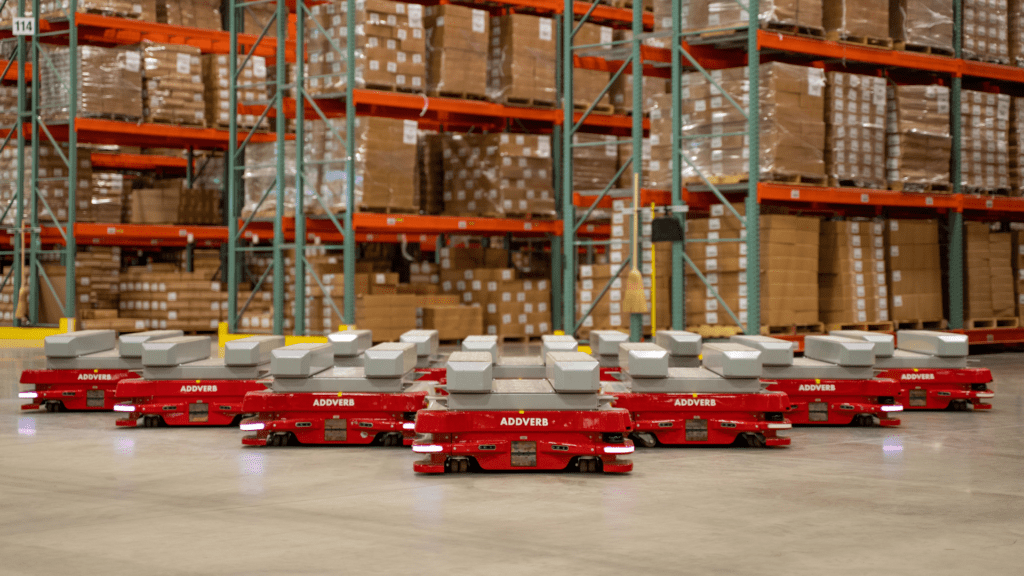
Localization and Mapping
Challenge:
Accurate localization and mapping are fundamental for mobile robots to navigate their environments efficiently. These processes involve the robot determining its position relative to its surroundings and creating a map of the area.
Did you know: If someone stumbles in front of an AMR, the safety laser scanning system quickly interprets the obstacle, allowing it to change direction or stop completely to avoid collision.
Issues:
- Dynamic Environments: Maintaining accurate maps in constantly changing environments is one of the major challenges of mobile robots. Objects move, people walk around, and the environment can alter significantly over short periods.
- Sensor Limitations: Reliance on LIDAR, cameras, and GPS can be problematic due to their susceptibility to interference, occlusion, and limited range.
Solutions:
- Simultaneous Localization and Mapping (SLAM): Advanced SLAM algorithms help robots create and update maps in real time, even in dynamic environments.
- Sensor Fusion: Combining data from multiple sensors can mitigate individual sensor limitations, providing a more robust and reliable perception of the environment.
Navigation and Path Planning
Challenge:
Mobile robots must efficiently navigate from one point to another, avoiding obstacles and optimizing their paths for speed and energy efficiency.
Issues:
- Obstacle Avoidance: Real-time detection and avoidance of obstacles, especially in unpredictable environments, is complex.
- Path Optimization: Balancing the shortest path with energy consumption and time constraints can be computationally intensive.
ALSO READ: Obstacle Free Mobile Robot Navigation
Solutions:
- Real-Time Path Planning Algorithms: Algorithms like A* and D* provide real-time navigation and obstacle avoidance frameworks.
- Machine Learning: Incorporating machine learning techniques allows robots to learn from past experiences and improve their navigation over time.
Addverb’s Zippy, assists with sortation.
Autonomy and Decision-Making
Challenge:
Achieving high levels of autonomy in mobile robots involves sophisticated decision-making capabilities, allowing them to perform tasks with minimal human intervention.
Issues:
- Complex Environments: Robots must interpret complex environments and make decisions involving ethical and safety considerations.
- Unpredictable Scenarios: Dealing with unforeseen events such as sudden obstacles or system failures requires advanced problem-solving skills.
Solutions:
- Artificial Intelligence: Leveraging AI enables robots to understand and adapt to complex environments, enhancing their decision-making processes.
- Hierarchical Control Systems: Combining low-level reflexive behaviors with high-level strategic planning helps in managing unpredictable scenarios effectively.
Our AMR, Dynamo, can navigate seamlessly among humans, delivering optimal performance and ensuring the best outcomes.
Energy Management
Challenge:
One of the challenges of mobile robots is to minimize downtime and maximize operating duration, which requires effective energy management.
Issues:
- Battery Life: Limited battery capacity restricts the operational time of robots, necessitating frequent recharging or battery swaps.
- Energy Efficiency: High energy consumption of sensors, processors, and actuators can deplete batteries quickly.
Solutions:
- Energy-Efficient Components: Using energy-efficient sensors, processors, and actuators can prolong battery life.
- Smart Charging Solutions: Autonomous docking stations and wireless charging technologies can help reduce downtime.
Human-Robot Interaction
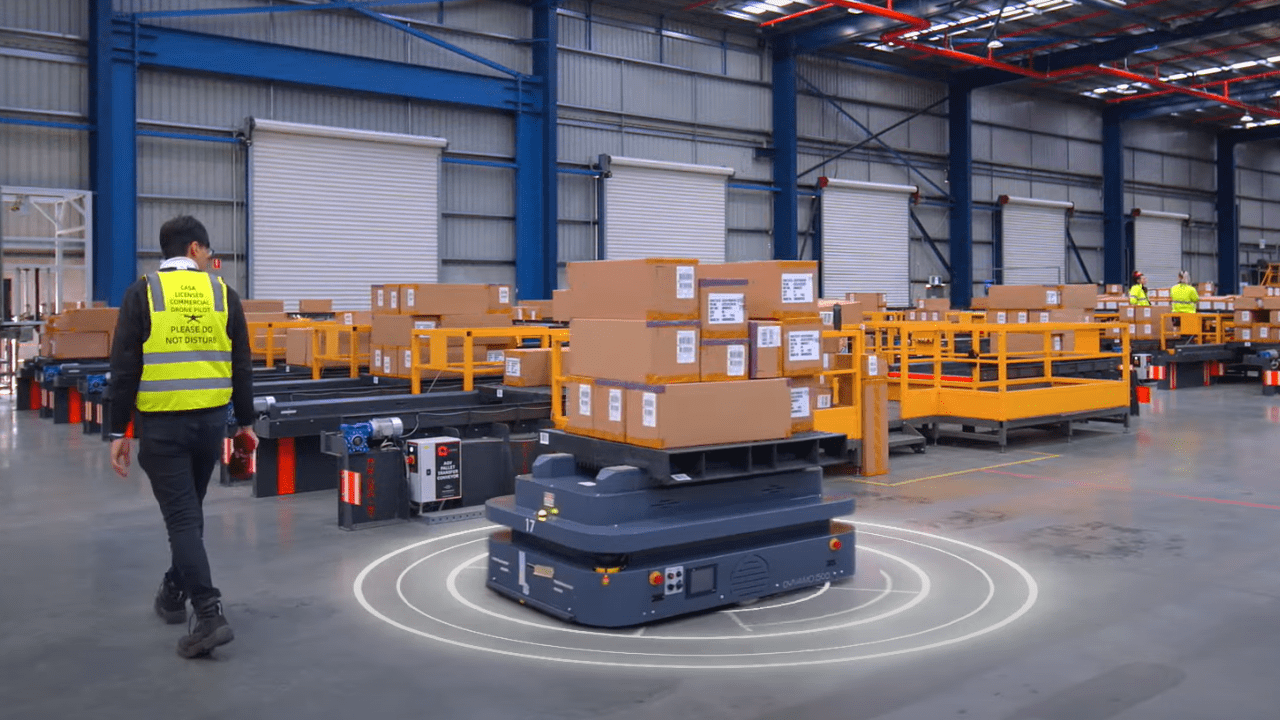
Challenge:
Ensuring smooth and intuitive interaction between humans and mobile robots is essential for their integration into various environments to dodge one of the challenges of mobile robots.
Issues:
- Usability: Designing interfaces and interaction methods that are intuitive for users with varying levels of technical expertise can be challenging.
- Safety: Ensuring that robots operate safely around humans, especially in shared spaces, is a critical concern.
Solutions:
- User-Centered Design: Involving end-users in the design process helps create more intuitive and user-friendly interfaces.
- Safety Protocols: Implementing robust safety protocols, such as emergency stop mechanisms and collision avoidance systems, ensures safer interactions.
Environmental Adaptability
Challenge:
Challenges of mobile robots include adapting to diverse and changing environmental conditions to perform their tasks effectively.
Issues:
- Indoor vs. Outdoor Environments: Different environments present unique challenges, such as varying terrain, lighting conditions, and weather.
- Environmental Hazards: Robots may encounter hazards like stairs, water, or debris that can impede their operation.
Solutions:
- Versatile Design: Designing robots with versatile locomotion capabilities, such as wheeled, legged, or hybrid systems, allows them to navigate various terrains.
- Adaptive Algorithms: Developing algorithms that enable robots to adjust their behavior based on real-time environmental feedback enhances their adaptability.
Digital Twin technology enhances environmental adaptability with ease.
Cost and Scalability
Challenge:
Developing cost-effective mobile robots that can be produced and deployed at scale is essential for widespread adoption.
Issues:
- High Development Costs: The research and development of advanced robotic systems are expensive.
- Scalability: Ensuring that robots can be manufactured and deployed at scale without significant cost increases is one of the major challenges of mobile robot.
Solutions:
- Modular Design: Adopting modular design principles allows for easier upgrades and customization, reducing development costs.
- Economies of Scale: As production scales up, costs can be reduced through economies of scale and more efficient manufacturing processes.
For more insight into mobile robots, dive into our blogs to learn more.
Conclusion
The journey of mobile robots from research labs to real-world applications is fraught with challenges. However, ongoing advancements in technology and innovative solutions are steadily overcoming these obstacles. By addressing the functional challenges of mobile robots such as localization, navigation, autonomy, energy management, human-robot interaction, environmental adaptability, and cost, they are poised to become indispensable assets in our daily lives. As we continue to refine these technologies, the vision of a world seamlessly integrated with intelligent, autonomous mobile robots moves closer to reality.
FAQ
What industries benefit from mobile robots?
Industries such as manufacturing, logistics, healthcare, retail, and agriculture benefit from using mobile robots for tasks like transportation, sorting, and inspection.
How do these robots navigate?
Mobile robots navigate using a combination of sensors, cameras, GPS, LIDAR, and sophisticated algorithms that help them understand and adapt to their surroundings.
What are the functional challenges of mobile robots?
Functional challenges of mobile robots are obstacle avoidance, battery life limitations, complex environmental conditions, and integration with existing systems.
Are robots safe to use around humans?
Yes, most mobile robots have safety features like collision detection and emergency stop functions to ensure they operate safely around humans.
How do robots handle heavy loads?
Mobile robots designed for heavy loads are equipped with robust frames, powerful motors, and specialized control systems to ensure safe and efficient transportation of goods.
Can mobile robots be customized for specific tasks?
Yes, many mobile robots can be customized with different attachments, software, and sensors to perform specific tasks tailored to the needs of various industries.


